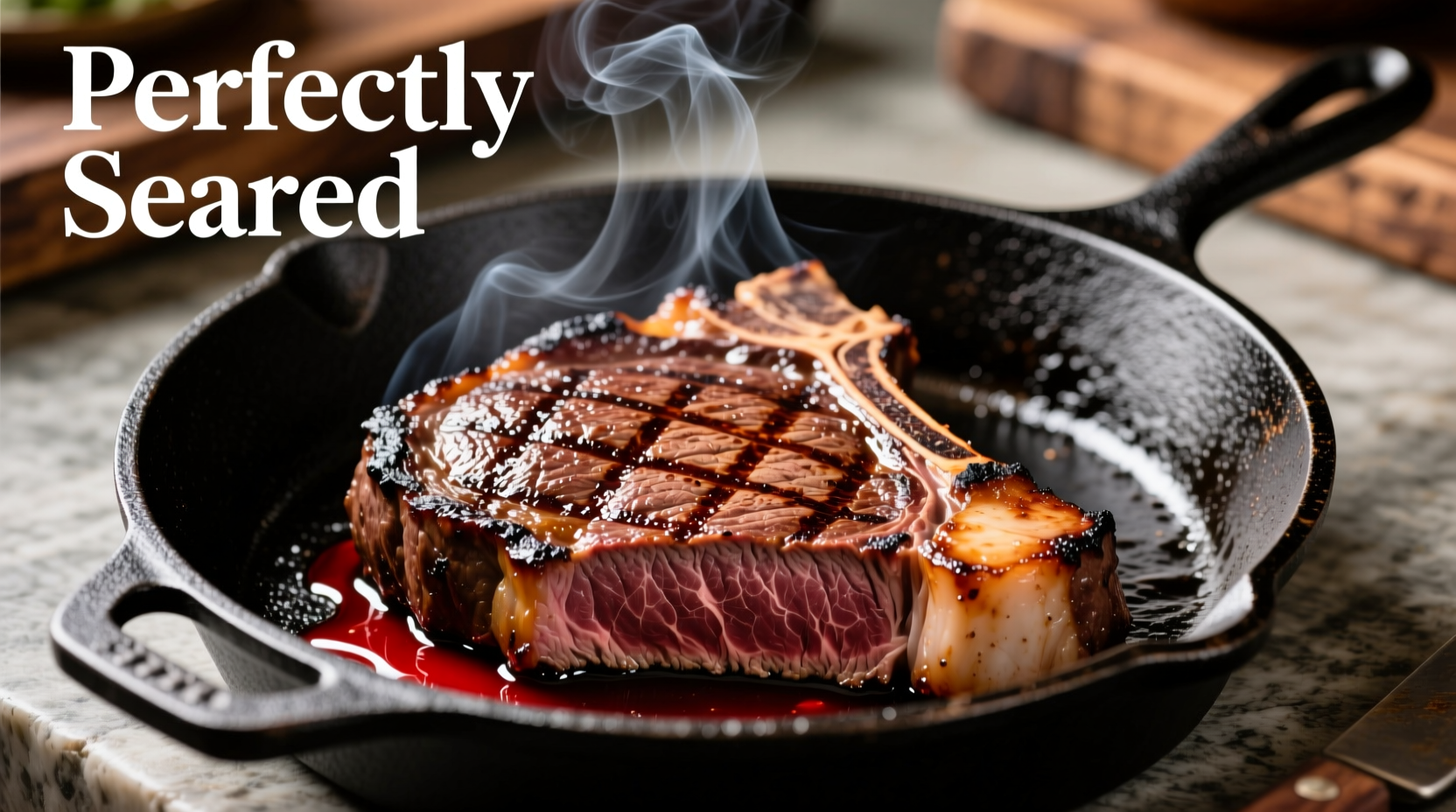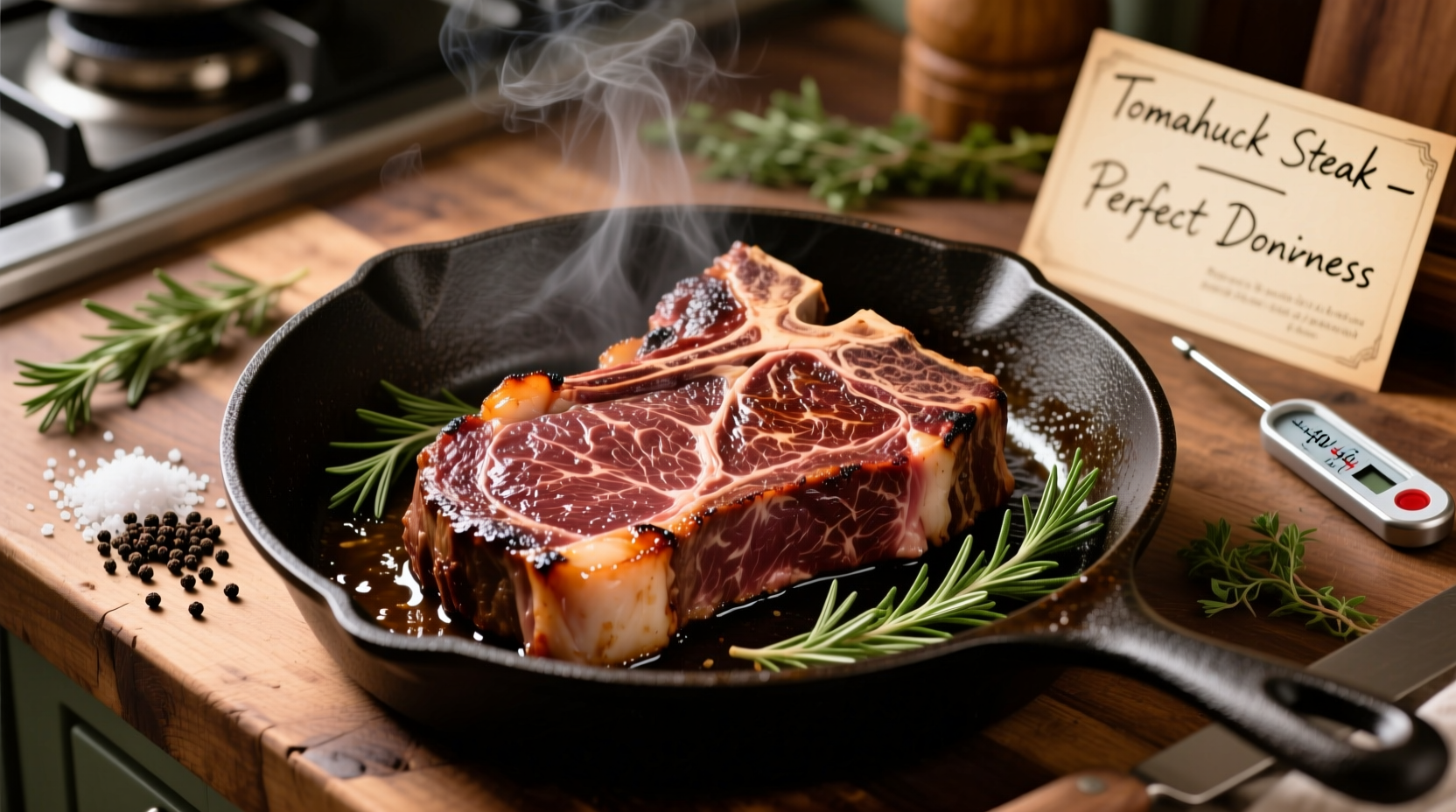Cooking a tomahawk steak in the oven might seem intimidating, but this method delivers perfectly cooked results with a flavorful crust and tender interior. Unlike standard ribeyes, the tomahawk's large size (typically 32-48 ounces) and long bone present unique challenges that require a specific approach. This guide provides the exact technique professional chefs use to cook this impressive cut without drying it out or creating uneven doneness.
Why Oven Cooking Works Best for Tomahawk Steaks
The tomahawk's distinctive feature—the 5-8 inch rib bone attached—creates uneven heat distribution when cooked using traditional methods. Grilling often results in the meat near the bone cooking slower than the outer portions, leading to inconsistent doneness. The oven method solves this problem by providing consistent, surrounding heat after an initial sear.
According to the American Meat Science Association, "large cuts benefit from a two-stage cooking process that develops surface flavor through high-heat searing while ensuring even internal cooking through controlled oven temperatures." This approach maximizes the Maillard reaction (the chemical process creating complex flavors during browning) while preventing the exterior from burning before the interior reaches the desired temperature.
Essential Equipment Checklist
Having the right tools makes this process significantly easier:
- Heavy cast-iron or oven-safe skillet (essential for proper searing)
- Instant-read thermometer (non-negotiable for accuracy)
- Wire rack (for resting)
- Butcher's twine (optional, for shaping)
- Basting brush
| Equipment | Why It Matters | Cost-Effective Alternative |
|---|---|---|
| Cast-iron skillet | Holds heat consistently for perfect sear | Stainless steel oven-safe pan |
| Instant-read thermometer | Prevents guesswork for perfect doneness | Digital probe thermometer |
| Wire rack | Allows air circulation during resting | Upside-down baking pan |
Step-by-Step Cooking Process
Preparation (30-60 Minutes Before Cooking)
Remove your tomahawk steak from the refrigerator and let it come to room temperature—this takes about 30-60 minutes depending on thickness. Pat the steak completely dry with paper towels; moisture is the enemy of proper searing. Season generously with coarse salt and freshly ground black pepper on all sides. For enhanced flavor, add 1-2 minced garlic cloves and fresh rosemary to the seasoning mix.
Searing (Critical Flavor Development)
Preheat your oven to 400°F (204°C). Heat your cast-iron skillet over medium-high heat until smoking hot (about 5 minutes). Add 1-2 tablespoons of high smoke-point oil (avocado or grapeseed oil work best). Carefully place the steak in the skillet, laying it away from you to avoid oil splatter.
Sear for 3-4 minutes per side until a deep brown crust forms. Use tongs to sear the edges, including the fat cap, for 2 minutes. During the last minute of searing, add 2 tablespoons of butter, 2 garlic cloves, and fresh thyme to the skillet. Tilt the pan and spoon the melted butter continuously over the steak for added flavor.

Oven Roasting (Precision Temperature Control)
Transfer the skillet directly to your preheated oven. Roast for 15-20 minutes for medium-rare, monitoring the internal temperature closely. The USDA Food Safety and Inspection Service recommends cooking beef to a minimum internal temperature of 145°F with a 3-minute rest time for safety, but most chefs prefer 125-130°F for medium-rare with proper resting.
Insert your thermometer into the thickest part of the meat, avoiding the bone. Remove the steak when it reaches 115-120°F for medium-rare—remember that carryover cooking will raise the temperature 5-10 degrees during resting. For reference:
- 115-120°F: Rare (final 125-130°F after resting)
- 120-125°F: Medium-rare (final 130-135°F after resting)
- 130-135°F: Medium (final 140-145°F after resting)
Resting (The Most Overlooked Step)
Transfer the steak to a wire rack and let it rest for 10-15 minutes. This crucial step allows the juices to redistribute throughout the meat. Cutting too soon causes precious juices to escape onto your cutting board. As noted by the Culinary Institute of America, "large cuts like tomahawk steaks require extended resting time—approximately one minute per pound—to achieve optimal juiciness."
Temperature Guide & Doneness Indicators
While thermometers provide the most accurate measurement, these visual and tactile cues help verify doneness:
- Rare: Cool red center, very soft when pressed
- Medium-rare: Warm red center, soft with slight resistance
- Medium: Warm pink center, yielding with moderate resistance
- Medium-well: Slightly pink center, firm with considerable resistance
- Well-done: Little or no pink, very firm
For food safety, the USDA recommends cooking ground meats to 160°F and poultry to 165°F, but whole muscle cuts like tomahawk steak can be safely consumed at lower temperatures when handled properly. Always follow safe food handling practices as outlined on the USDA Food Safety and Inspection Service website.
Troubleshooting Common Issues
Uneven Cooking Near the Bone
The bone insulates the surrounding meat, causing it to cook slower. Solution: Position the bone-side slightly away from direct heat during searing and rotate the steak occasionally in the oven.
Exterior Overcooking Before Interior Reaches Temperature
This happens when the oven temperature is too high. Solution: Reduce oven temperature to 375°F and extend cooking time slightly, monitoring closely with your thermometer.
Insufficient Crust Formation
Dry surface is essential for proper searing. Solution: Pat steak thoroughly dry before seasoning and ensure your skillet is properly preheated until smoking hot.
Serving Recommendations
Cut against the grain in ½-inch slices for maximum tenderness. Serve with simple accompaniments that won't overpower the steak's rich flavor:
- Garlic herb butter
- Roasted vegetables
- Simple green salad
- Red wine reduction sauce
For an impressive presentation, stand the bone upright on the serving platter with slices fanned around it—a technique known as "frenching" the bone that many high-end steakhouses use.











 浙公网安备
33010002000092号
浙公网安备
33010002000092号 浙B2-20120091-4
浙B2-20120091-4